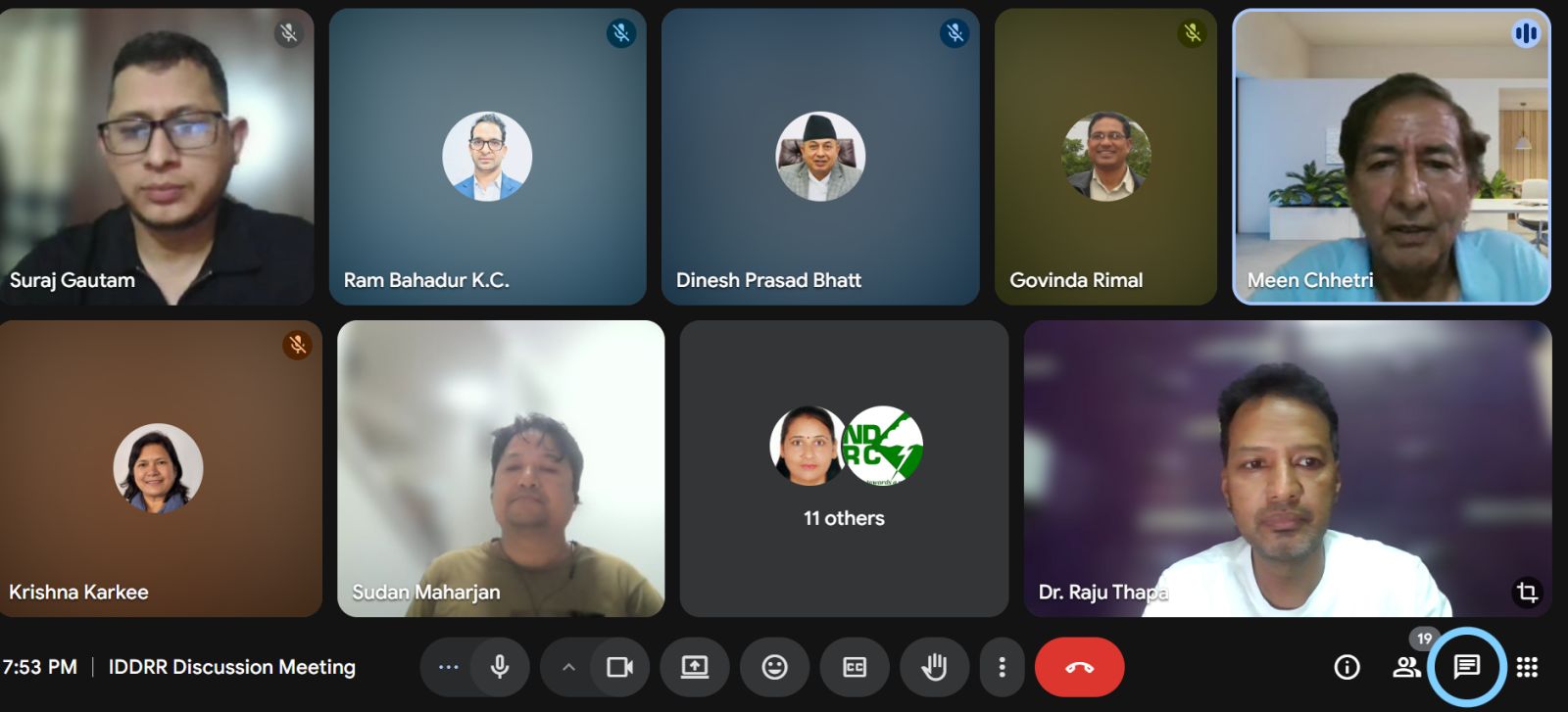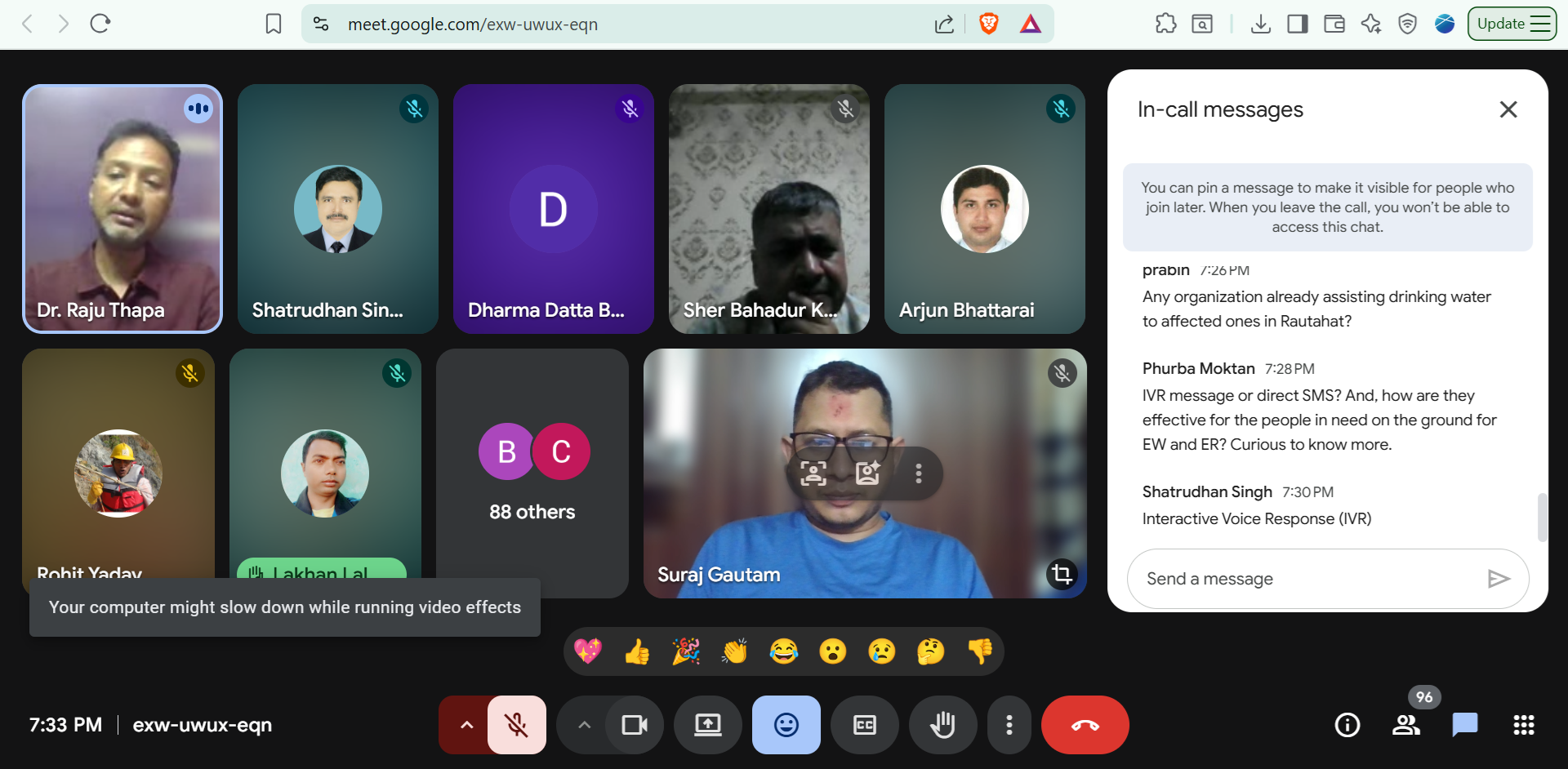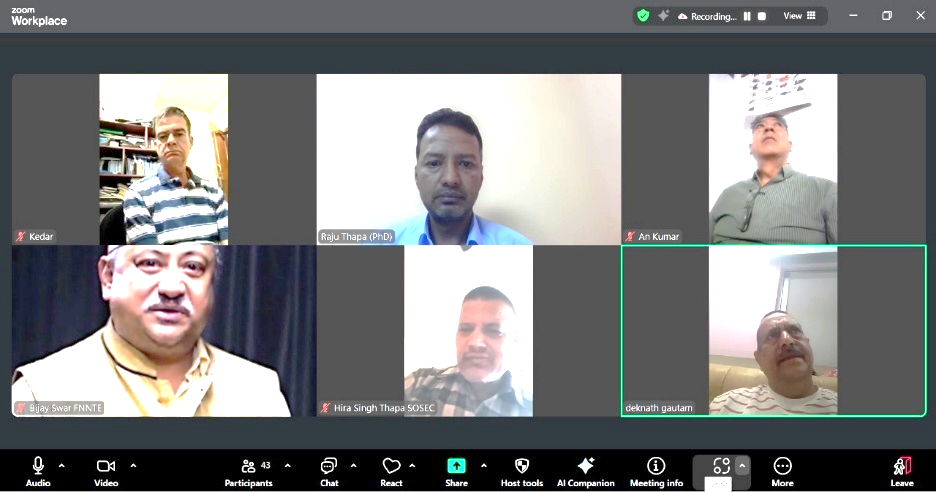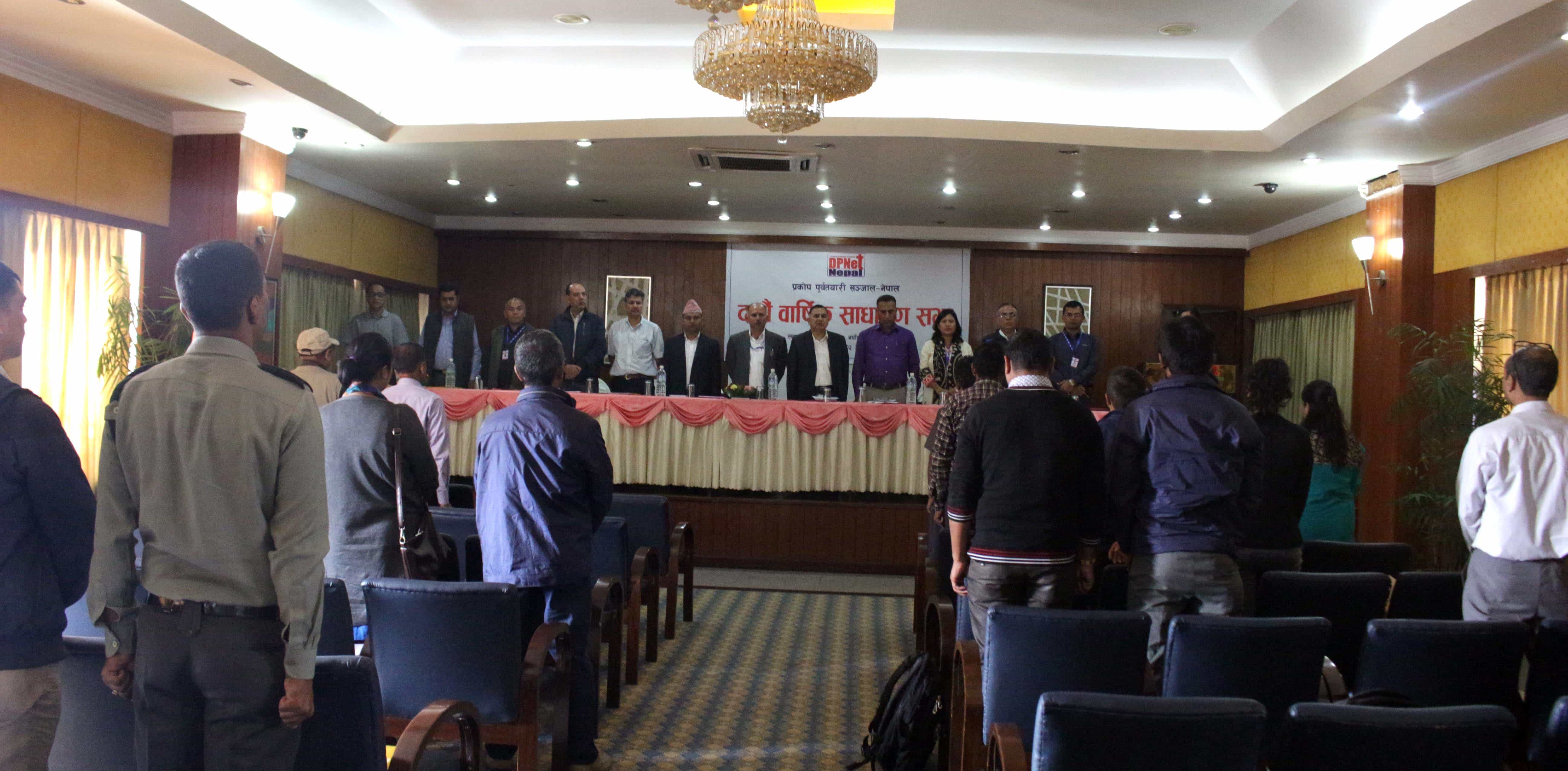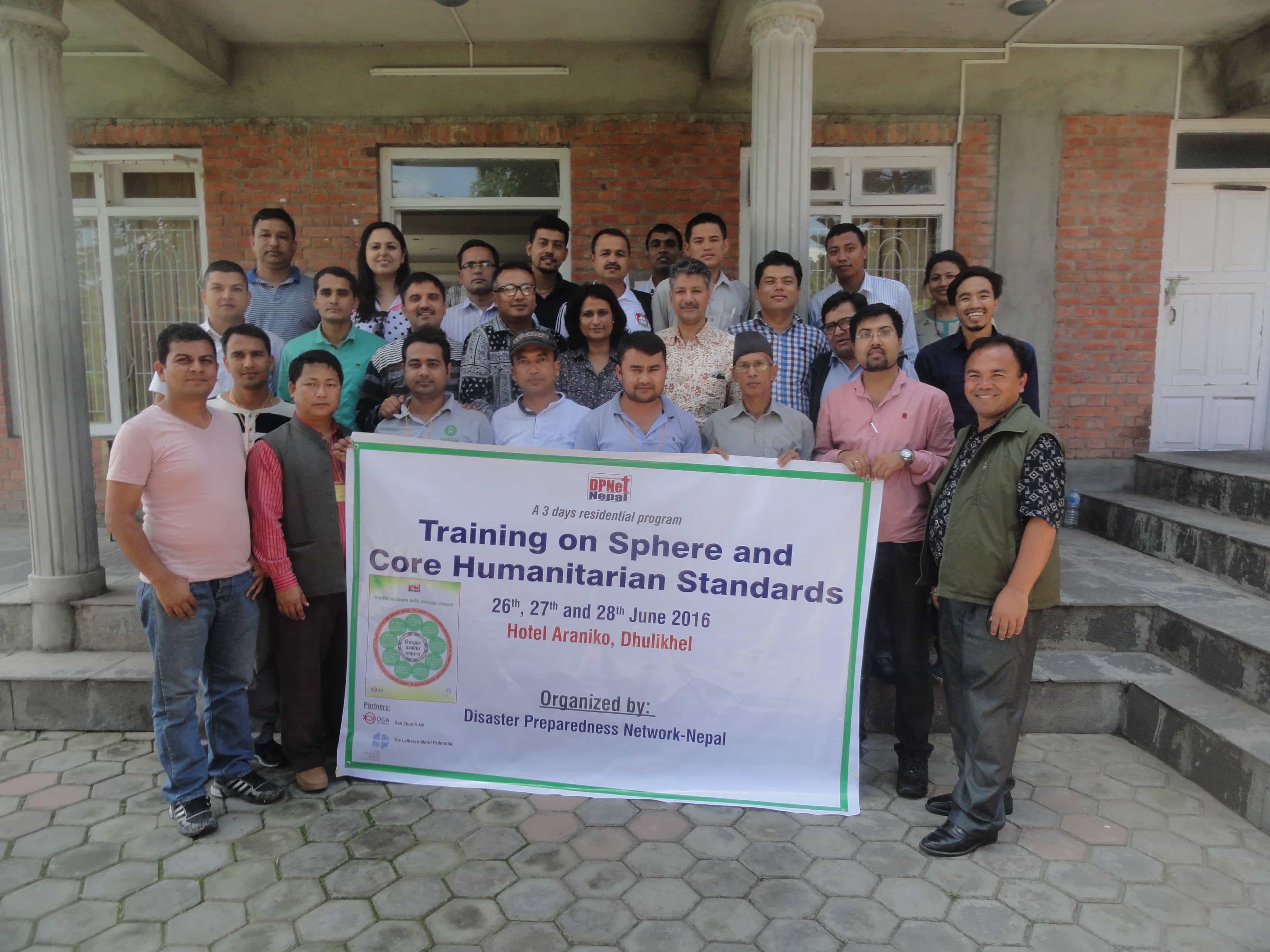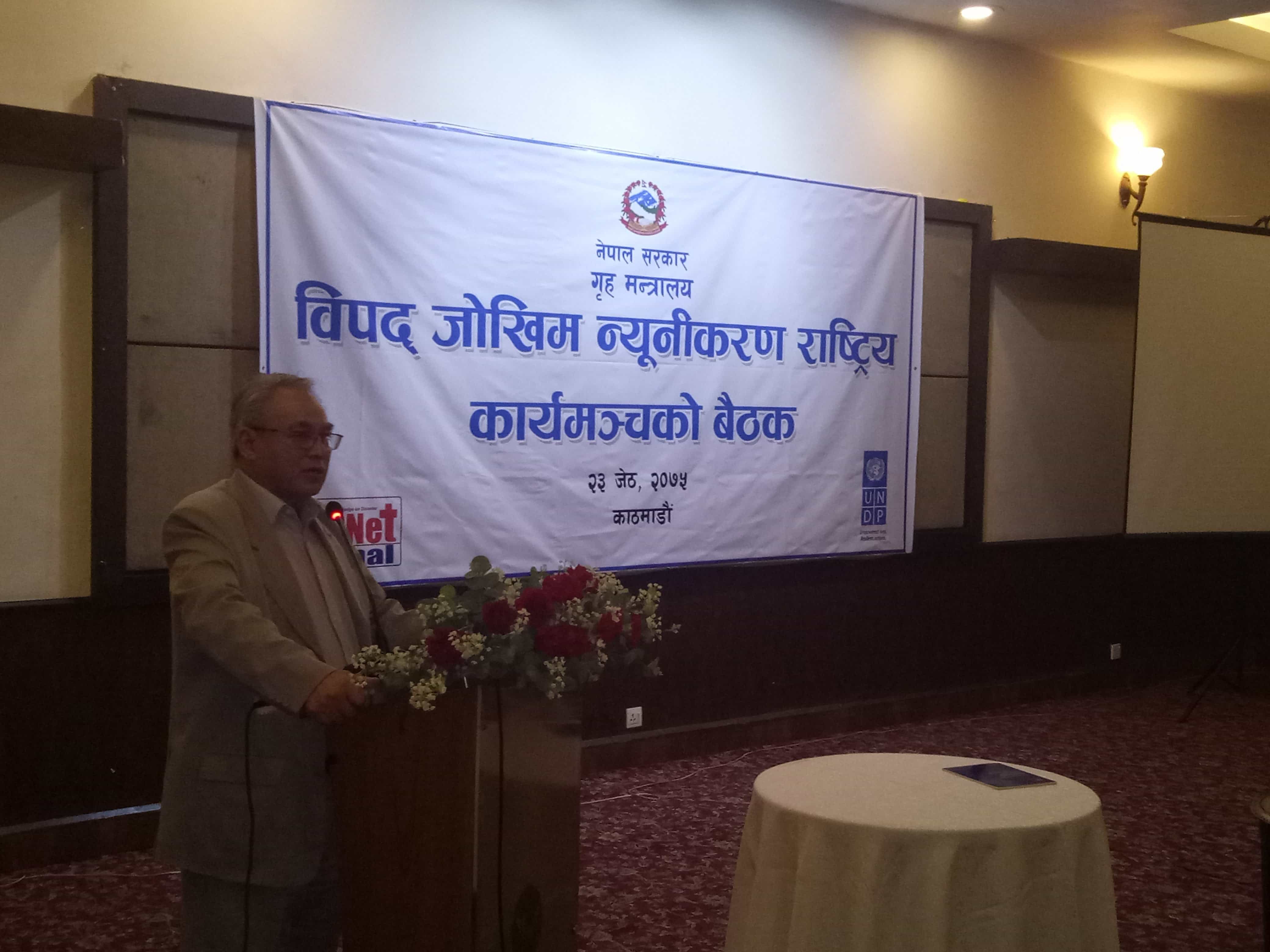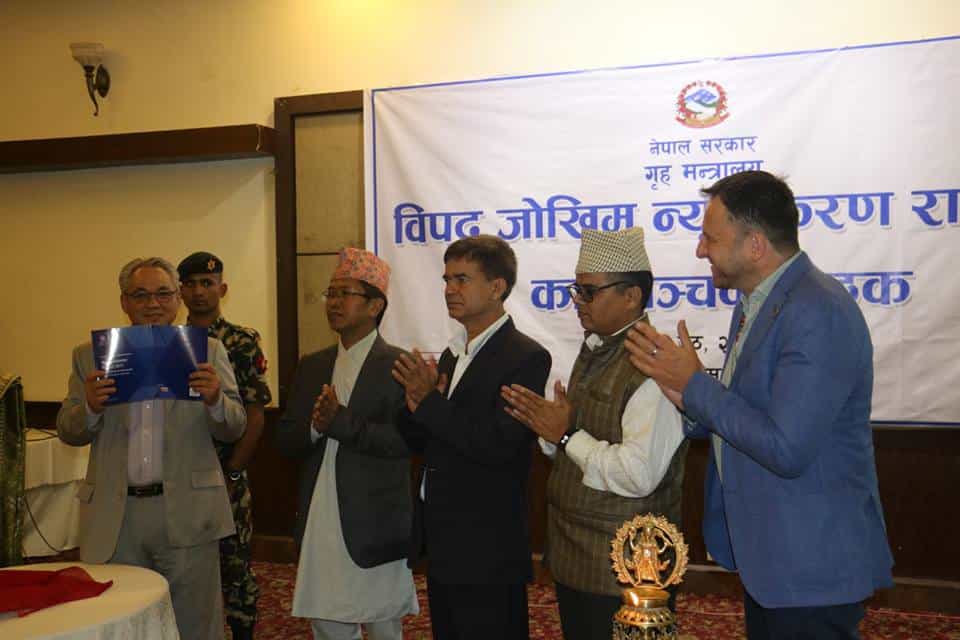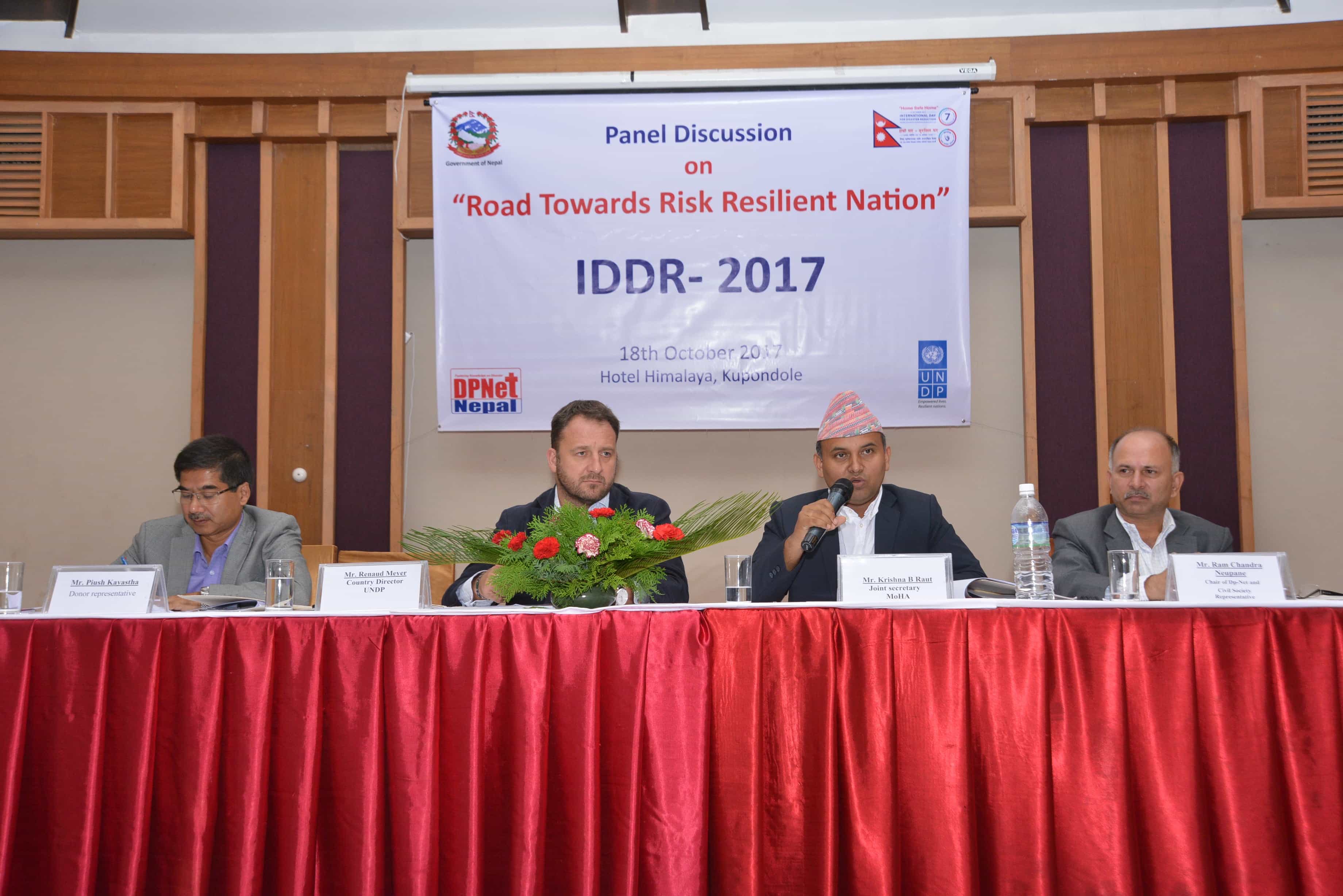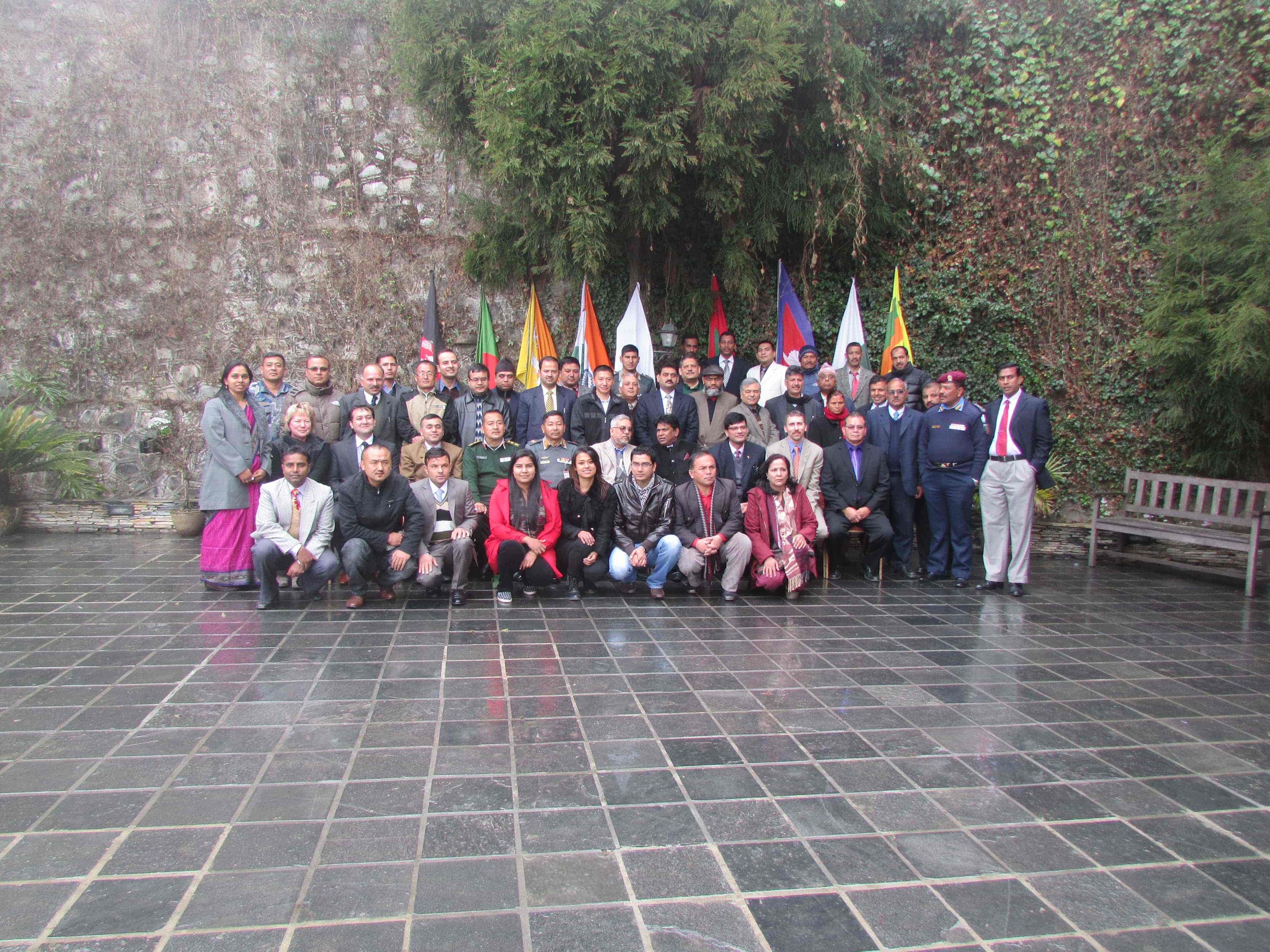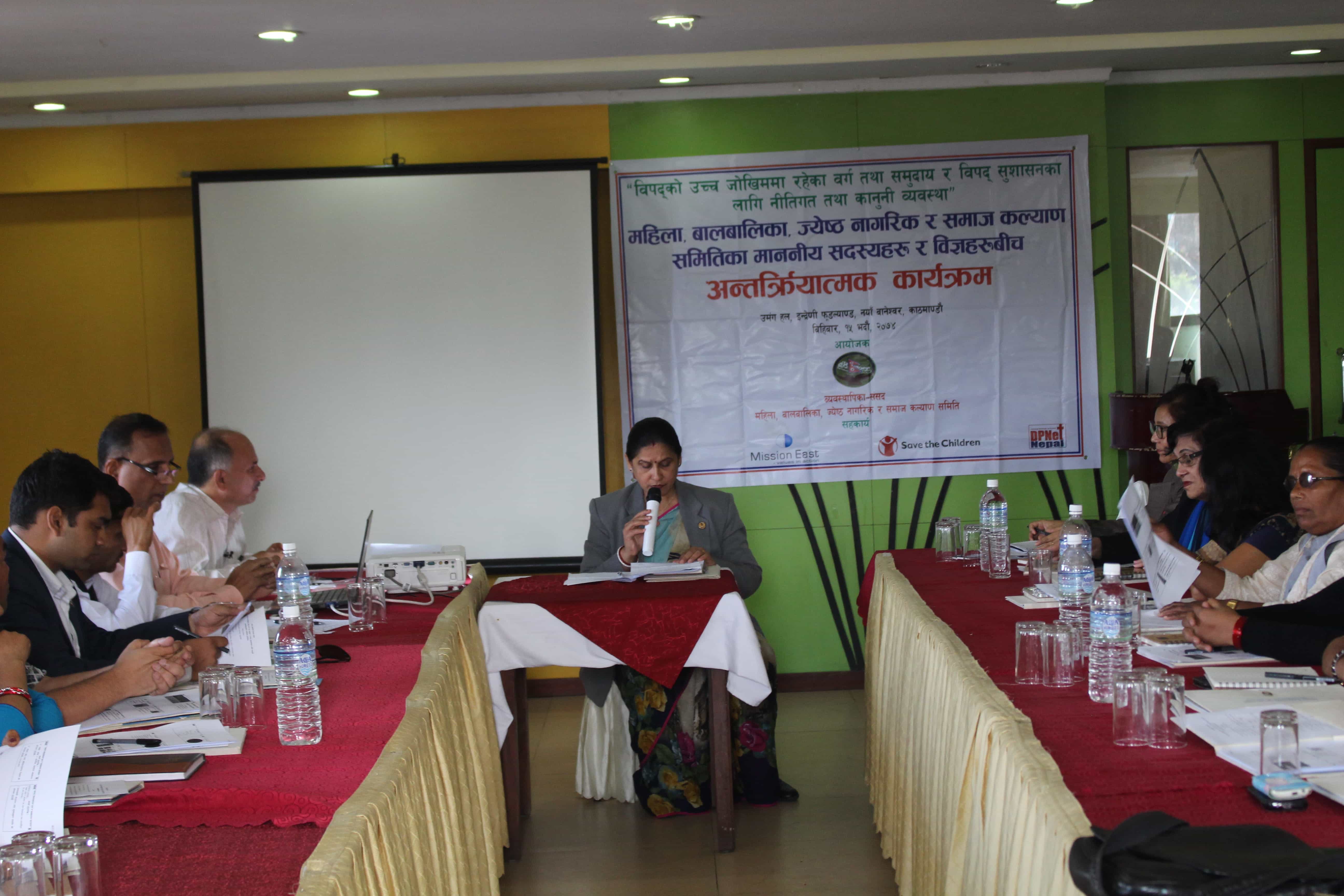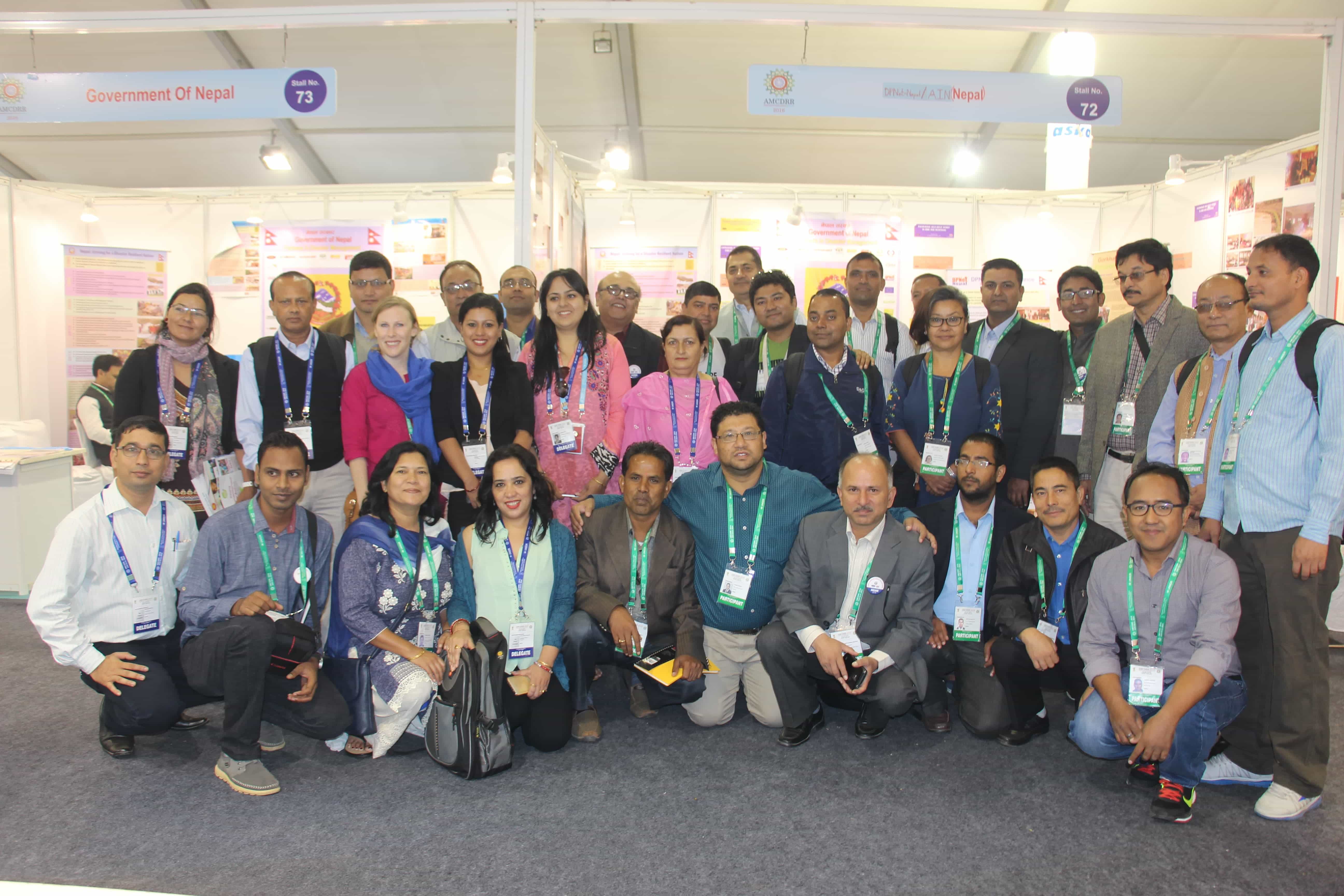DPNet Coordinates National Symposium for IDDRR Celebration
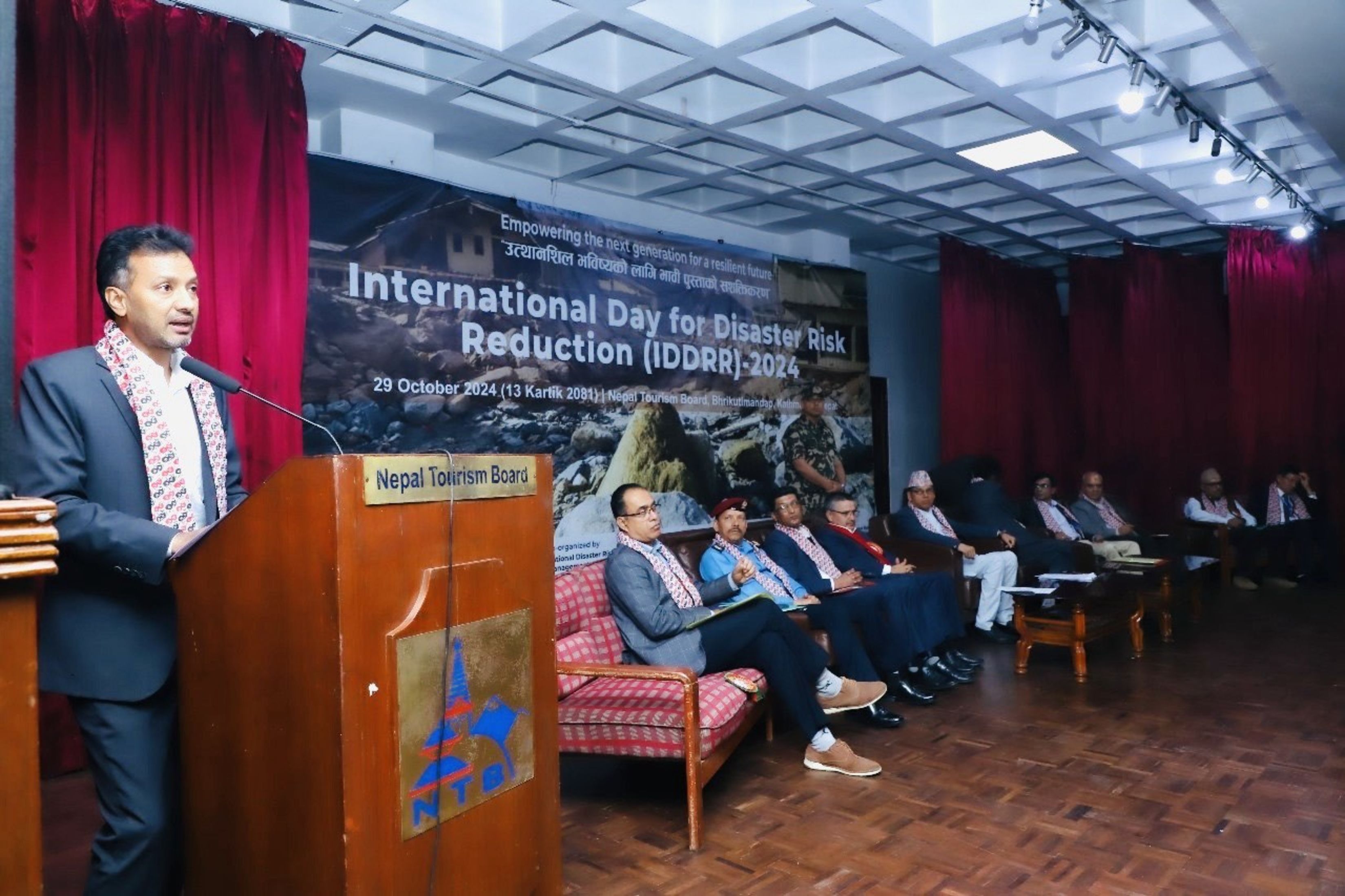
The Nepal Geological Society (NGS), in partnership with the National Disaster Risk Reduction and Management Authority (NDRRMA) as the co-organizer and DPNet Nepal as the coordinator, hosted a symposium for the International Day for Disaster Risk Reduction (IDDRR) 2024. Held under the theme “Empowering the Next Generation for a Resilient Future,” the event took place on October 29, 2024, at the Nepal Tourism Board in Kathmandu. A broad spectrum of stakeholders participated, including government officials, geologists, disaster experts, youth representatives, and partner organizations. This gathering aimed to foster meaningful dialogue, share research, and discuss actionable strategies to mitigate disaster risks across Nepal.
Inaugural Session
The event began with an inaugural session chaired by NGS President Mr. Churna Bahadur Wali. Dr. Subodh Dhakal, the convener of the IDDRR Organizing Committee, welcomed the attendees and outlined the symposium’s objectives, emphasizing its importance in Nepal’s ongoing disaster risk reduction (DRR) efforts. Following the national anthem, Hon. Minister Devendra Dahal inaugurated the symposium.
In his opening remarks, Minister Dahal highlighted the need to re-evaluate Nepal’s development model in light of recent monsoon floods, which revealed critical vulnerabilities in infrastructure and planning. “Disaster risks must be integrated into every development initiative,” he stressed. “Organizations like the Nepal Geological Society must prioritize studies on river corridors and highway, assessing soil conditions, and advising on flood and landslide prevention during rainy seasons.” Minister Dahal also emphasized the need to empower young people in disaster preparedness, highlighting that equipping future generations with DRR knowledge not only protects them but strengthens community resilience as a whole.
Anil Pokhrel, Executive Chief of NDRRMA, has informed the postponement of this year’s International Day for Disaster Risk Reduction (IDDRR) observance from October 13 to October 29. This adjustment takes into account the Dashain festival and the Asia-Pacific Ministerial Conference on Disaster Risk Reduction (APMCDRR), which follows immediately after Dashain. In line with Nepal's tradition of celebrating IDDRR throughout October, the new date supports the practice of month-long observances. Reflecting on insights from APMCDRR 2024, Pokhrel highlighted Nepal’s commitment to integrating indigenous knowledge with digital tools, countering misinformation, and advancing gender-sensitive DRR policies. “Nepal’s active participation reaffirmed our commitment to regional DRR efforts,” he remarked. “We aim to incorporate these learnings into national strategies, with a priority on climate finance reforms and collaborative resilience-building.” Pokhrel also stressed the importance of volunteer mobilization, mentioning NDRRMA’s growing network of over 100,000 volunteers ready to support preparedness and recovery initiatives.
DPNet’s Chair, Dr. Raju Thapa, spoke on the relevance of this year’s IDDRR theme, emphasizing future generations in the context of climate change. He highlighted the urgency of linking disaster risk reduction with climate action to safeguard upcoming generations. Dr. Thapa cited this year July 22 global temperature records, stressing, “We are like frogs in boiling water—if we don’t act urgently, irreversible impacts will befall us.” He called on all stakeholders to bridge DRR and climate action, emphasizing the need to empower youth to build a resilient society.
Technical Sessions
Following the inaugural session, the symposium transitioned into technical sessions featuring research presentations and an expert panel discussion.
Technical Session 1: Paper Presentations
The first technical session, chaired by Prof. Dr. Danda Pani Adhikari with rapporteurs Sarmila Paudyal and Dr. Basant Bhandari, showcased recent DRR research in Nepal. Dr. Basanta Raj Adhikari from the Institute of Engineering opened with a presentation on “Empowering Youth in Disaster Risk Reduction and Data Challenges Amid Cascading Hazards in the Nepal Himalaya.” He addressed the unique challenges posed by cascading hazards in the Himalayan region and emphasized equipping young people with data skills to analyze and respond effectively to disaster risks.
The next presentation, “Seismic Safety and Resilience of Schools in Nepal,” was delivered by Er. Vibek Manandhar from NSET. Manandhar discussed the vulnerabilities of school infrastructure in Nepal to seismic activities, calling for retrofitting existing buildings and enforcing seismic-resilient construction standards to enhance the safety of educational institutions. He emphasized that such efforts require collaboration between the government and private sectors.
The final paper, presented by Mr. Shiva Baskota and Dr. Gautam Prashad Khanal from the Department of Mines and Geology, examined the recent flood and landslide disasters in central Nepal. They shared preliminary findings, identifying critical areas affected by these disasters and proposing mitigation measures for vulnerable zones. The presentations received strong interest and prompted discussions on innovative approaches to community resilience.
Technical Session 2: Expert Panel Discussion
The second technical session was a panel discussion moderated by Dr. Subodh Dhakal, focusing on DRR challenges and mitigation strategies in Nepal. Panelists included Er. Arjun Kumar Bam, Joint Secretary of NDRRMA; Shuva Raj Neupane, Joint Secretary of the Ministry of Physical Planning and Works; Prof. Dr. Tara Nidhi Bhattarai, a respected geologist; Subash Chandra Baral, President of the Nepal Engineers' Association (NEA); and Ms. Smita Paudel, a GEDSI Specialist.
The panel discussed various complexities of implementing DRR measures from policy to practice. Er. Bam highlighted NDRRMA’s dedication to improving early warning systems and disaster preparedness. Joint Secretary Neupane highlighted the necessity of embedding DRR considerations in all infrastructure projects. Prof. Dr. Bhattarai called for geological assessments before major constructions, particularly in river corridors, while Ms. Paudel highlighted the need for gender-sensitive and inclusive DRR practices to protect vulnerable groups adequately.
This discussion generated several actionable recommendations, including forming DRR-focused youth councils, mobilizing local volunteers for awareness programs, and increasing government funding for disaster risk assessment projects.
Final Session: Review and Reflections on APMCDRR 2024
In the concluding session, moderated by Dr. Raju Thapa DPNet Chiar, participants reflected on Nepal’s involvement in APMCDRR 2024. Dr. Raju Thapa led the discussion, focusing on key insights from the conference, including the integration of indigenous knowledge with advanced digital tools, countering misinformation, and strengthening community resilience. Panelists highlighted Nepal’s commitment to incorporating APMCDRR insights into national DRR strategies, particularly around climate finance reforms and regional partnerships. Executive Chief Anil Pokhrel expressed gratitude to DPNet for its outstanding coordination, highlighting the success of APMCDRR and the new directions it offers Nepal’s DRR efforts.
Closing Remarks
In his closing remarks, NGS President Mr. Churna Bahadur Wali extended his gratitude to all participants, sponsors, and partners for their contributions to a successful symposium. He highlighted the need for sustained collaboration to build a resilient Nepal and encouraged all attendees to translate the day’s discussions into concrete actions.
The Nepal Geological Society (NGS), in partnership with the National Disaster Risk Reduction and Management Authority (NDRRMA) as the co-organizer and DPNet Nepal as the coordinator, hosted a symposium for the International Day for Disaster Risk Reduction (IDDRR) 2024. Held under the theme “Empowering the Next Generation for a Resilient Future,” the event took place on October 29, 2024, at the Nepal Tourism Board in Kathmandu. A broad spectrum of stakeholders participated, including government officials, geologists, disaster experts, youth representatives, and partner organizations. This gathering aimed to foster meaningful dialogue, share research, and discuss actionable strategies to mitigate disaster risks across Nepal.
Inaugural Session
The event began with an inaugural session chaired by NGS President Mr. Churna Bahadur Wali. Dr. Subodh Dhakal, the convener of the IDDRR Organizing Committee, welcomed the attendees and outlined the symposium’s objectives, emphasizing its importance in Nepal’s ongoing disaster risk reduction (DRR) efforts. Following the national anthem, Hon. Minister Devendra Dahal inaugurated the symposium.
In his opening remarks, Minister Dahal highlighted the need to re-evaluate Nepal’s development model in light of recent monsoon floods, which revealed critical vulnerabilities in infrastructure and planning. “Disaster risks must be integrated into every development initiative,” he stressed. “Organizations like the Nepal Geological Society must prioritize studies on river corridors and highway, assessing soil conditions, and advising on flood and landslide prevention during rainy seasons.” Minister Dahal also emphasized the need to empower young people in disaster preparedness, highlighting that equipping future generations with DRR knowledge not only protects them but strengthens community resilience as a whole.
Anil Pokhrel, Executive Chief of NDRRMA, has informed the postponement of this year’s International Day for Disaster Risk Reduction (IDDRR) observance from October 13 to October 29. This adjustment takes into account the Dashain festival and the Asia-Pacific Ministerial Conference on Disaster Risk Reduction (APMCDRR), which follows immediately after Dashain. In line with Nepal's tradition of celebrating IDDRR throughout October, the new date supports the practice of month-long observances. Reflecting on insights from APMCDRR 2024, Pokhrel highlighted Nepal’s commitment to integrating indigenous knowledge with digital tools, countering misinformation, and advancing gender-sensitive DRR policies. “Nepal’s active participation reaffirmed our commitment to regional DRR efforts,” he remarked. “We aim to incorporate these learnings into national strategies, with a priority on climate finance reforms and collaborative resilience-building.” Pokhrel also stressed the importance of volunteer mobilization, mentioning NDRRMA’s growing network of over 100,000 volunteers ready to support preparedness and recovery initiatives.
DPNet’s Chair, Dr. Raju Thapa, spoke on the relevance of this year’s IDDRR theme, emphasizing future generations in the context of climate change. He highlighted the urgency of linking disaster risk reduction with climate action to safeguard upcoming generations. Dr. Thapa cited this year July 22 global temperature records, stressing, “We are like frogs in boiling water—if we don’t act urgently, irreversible impacts will befall us.” He called on all stakeholders to bridge DRR and climate action, emphasizing the need to empower youth to build a resilient society.
Technical Sessions
Following the inaugural session, the symposium transitioned into technical sessions featuring research presentations and an expert panel discussion.
Technical Session 1: Paper Presentations
The first technical session, chaired by Prof. Dr. Danda Pani Adhikari with rapporteurs Sarmila Paudyal and Dr. Basant Bhandari, showcased recent DRR research in Nepal. Dr. Basanta Raj Adhikari from the Institute of Engineering opened with a presentation on “Empowering Youth in Disaster Risk Reduction and Data Challenges Amid Cascading Hazards in the Nepal Himalaya.” He addressed the unique challenges posed by cascading hazards in the Himalayan region and emphasized equipping young people with data skills to analyze and respond effectively to disaster risks.
The next presentation, “Seismic Safety and Resilience of Schools in Nepal,” was delivered by Er. Vibek Manandhar from NSET. Manandhar discussed the vulnerabilities of school infrastructure in Nepal to seismic activities, calling for retrofitting existing buildings and enforcing seismic-resilient construction standards to enhance the safety of educational institutions. He emphasized that such efforts require collaboration between the government and private sectors.
The final paper, presented by Mr. Shiva Baskota and Dr. Gautam Prashad Khanal from the Department of Mines and Geology, examined the recent flood and landslide disasters in central Nepal. They shared preliminary findings, identifying critical areas affected by these disasters and proposing mitigation measures for vulnerable zones. The presentations received strong interest and prompted discussions on innovative approaches to community resilience.
Technical Session 2: Expert Panel Discussion
The second technical session was a panel discussion moderated by Dr. Subodh Dhakal, focusing on DRR challenges and mitigation strategies in Nepal. Panelists included Er. Arjun Kumar Bam, Joint Secretary of NDRRMA; Shuva Raj Neupane, Joint Secretary of the Ministry of Physical Planning and Works; Prof. Dr. Tara Nidhi Bhattarai, a respected geologist; Subash Chandra Baral, President of the Nepal Engineers' Association (NEA); and Ms. Smita Paudel, a GEDSI Specialist.
The panel discussed various complexities of implementing DRR measures from policy to practice. Er. Bam highlighted NDRRMA’s dedication to improving early warning systems and disaster preparedness. Joint Secretary Neupane highlighted the necessity of embedding DRR considerations in all infrastructure projects. Prof. Dr. Bhattarai called for geological assessments before major constructions, particularly in river corridors, while Ms. Paudel highlighted the need for gender-sensitive and inclusive DRR practices to protect vulnerable groups adequately.
This discussion generated several actionable recommendations, including forming DRR-focused youth councils, mobilizing local volunteers for awareness programs, and increasing government funding for disaster risk assessment projects.
Final Session: Review and Reflections on APMCDRR 2024
In the concluding session, moderated by Dr. Raju Thapa DPNet Chiar, participants reflected on Nepal’s involvement in APMCDRR 2024. Dr. Raju Thapa led the discussion, focusing on key insights from the conference, including the integration of indigenous knowledge with advanced digital tools, countering misinformation, and strengthening community resilience. Panelists highlighted Nepal’s commitment to incorporating APMCDRR insights into national DRR strategies, particularly around climate finance reforms and regional partnerships. Executive Chief Anil Pokhrel expressed gratitude to DPNet for its outstanding coordination, highlighting the success of APMCDRR and the new directions it offers Nepal’s DRR efforts.
Closing Remarks
In his closing remarks, NGS President Mr. Churna Bahadur Wali extended his gratitude to all participants, sponsors, and partners for their contributions to a successful symposium. He highlighted the need for sustained collaboration to build a resilient Nepal and encouraged all attendees to translate the day’s discussions into concrete actions.
